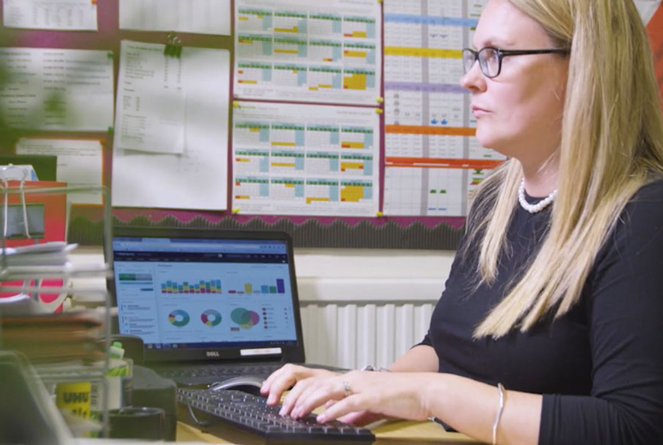Introduction
Making assessment tracking easier and more intuitive for primary schools isn’t just about convenience; it’s about respecting teachers’ time, improving data quality, and cultivating a happier, more effective learning environment. As schools navigate a growing sea of complex educational technology, the need to prioritise intuitive, user-friendly design has never been clearer.
The Price of Complexity
Many primary school assessment systems, even a well-designed spreadsheet, boast sophisticated features, but their complexity can get in the way of good teaching. When tracking tools are inflexible, require lots of customisation, confusing setup, and endless admin steps, the burden falls squarely on teachers. Instead of dedicating energy to lesson planning and student support, teachers get bogged down in learning the system itself or solving repetitive technical issues. This added cognitive load often leads to frustration, poor engagement, inconsistent data entry, and missed opportunities for timely interventions.
The direct result? Teachers experience work delays, stress, and, over time, burnout. Meanwhile, school leaders get only patchy or delayed assessment data, which undermines their ability to drive real school improvement.
Intuitive Design: A Game Changer
Intuitive design means creating a system that just “makes sense.” It fits naturally into the way teachers already work, reducing the time needed for training and troubleshooting. Key features of an intuitive assessment tracker include:
- Simple, logical navigation and clear visual cues
- Minimal need for training or technical explanations
- Data entry that is quick to find and instantly understandable
- Seamless integration with other school systems, so data stays unified and accessible
Educators overwhelmingly favour these kinds of tools, as highlighted by positive feedback on platforms like Sonar Tracker, which are often described as “teacher-friendly” and “easy to navigate.” Systems like Sonar build confidence in using technology as a core part of their workflow, with the added benefit of saving time for teachers and leaders alike.
Simplicity Unlocks New Possibilities
When software is easy to navigate and flexible, teachers and school leaders naturally find themselves using it for more than just assessment, they embed it into curriculum planning, reporting, and broader school operations, turning a single solution into a versatile hub for everyday school life.
“We’ve seen schools adopt Sonar initially just to track summative assessments, but once staff get used to it and see how easy it is to use, they use it for so much more. Reporting for Governor meetings, bringing objective data to conversations, and even tracking progress through schemes of work” – Lee Sadler, Senior Account Manager at Juniper Education.
Quality Data Drives Progress
The easier it is for teachers to enter, review, and analyse data, the better the data becomes. Reliable, up-to-date information lets school leaders recognise early warning signs, target support where it’s needed most, and demonstrate impact clearly to governors and parents. In contrast, when systems are difficult to use, staff may delay entering data or create workarounds that ultimately distort the story of pupil progress. This can prevent early intervention and mislead school improvement planning.
Automated analysis and instantly accessible visual reports further empower teachers, helping them spot patterns and respond quickly to student needs rather than waiting for laborious manual reporting cycles. The end result is a culture where school improvement is agile, evidence-based, and closely linked to what really happens in the classroom.
Teacher Well-being and Retention
A teacher’s greatest resource is time. When schools invest in intuitive solutions, it sends a strong message that staff well-being is valued. Reducing unnecessary admin lifts morale and gives teachers space to focus on their passion: high-quality teaching and forming connections with their pupils. Studies and real-world testimonials show that streamlined assessment tools directly reduce teacher workload and play a key role in retaining talented staff during an era of recruitment challenges.
Moreover, by automating routine tasks and offering support for professional development, intuitive EdTech helps teachers grow their skills without adding to their stress. Ultimately, satisfied teachers are more likely to stay, contribute positively, and foster a thriving school community.
Simplicity Wins
In today’s schools, assessment trackers must be a help, not a hindrance. When systems are intuitive and seamless, teachers reclaim time, data quality improves, and the entire school benefits. Investing in user-centred design isn’t just about getting the latest technology, it’s a strategic decision to support your teachers and, in turn, drive meaningful learner progress.
Prioritising intuitive design is not just a trend, it’s the hidden lever that can transform assessment from an administrative burden into a powerful tool for school improvement, teacher well-being, and student success.
Learn more about our primary assessment trackers, and how Juniper’s Intuitive design within Sonar Tracker can help to build engagement with improve assessment in your school.


/Primary%20school%20.jpg?width=2000&name=Primary%20school%20.jpg)








.png?width=940&height=788&name=Lingfield%20College%20Case%20Study%20(5).png)
-1.png?width=1000&height=833&name=National%20Association%20of%20Head%20Teachers%20(3)-1.png)
-3.png?width=1080&height=1080&name=Untitled%20design%20(10)-3.png)






